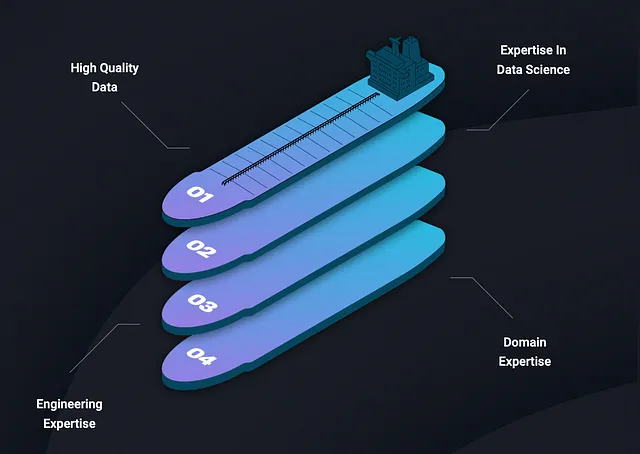Vortexa Freight Market Outlook
To assess pricing accurately, freight market participants have had to manually track ships worldwide, making notes on their location, and maintaining a database of their specific characteristics. This has been a near-impossible task as it requires one to extrapolate where every ship could be up to six weeks in the future.
Freight markets are influenced by a myriad of factors, making them notoriously volatile and difficult to predict. These factors include changes in global supply and demand for energy products, global and regional availability of appropriate vessels, political and economic instability, natural disasters and weather patterns, among others. In addition, there are complex cause-and-effect relationships with other industries, further complicating the prediction of freight market behaviour.
Machine learning (ML) models have the potential to fundamentally alter this scenario by providing a valuable complement to human experts. ML models learn trends and patterns directly from data and can quickly generate predictions based on the latest observations. In some cases, ML models are able to predict at a level of accuracy that is beyond the capability of humans.
The Vortexa Freight Market Outlook is a fully automated framework for the systematic discovery of predictive ML models for freight prices. It comprises modules for feature generation, feature selection, and model training and validation.
The Vortexa Freight Market Outlook generates approximately 2,600 unique features for each freight route by gathering real-time indicators of freight supply and demand from the Vortexa API endpoint. These features capture the complex and dynamic nature of the freight markets. However, including too many features can degrade model performance and cause overfitting, where the model is too closely tailored to the training data and performs poorly on new data. By using a feature selection method such as Boruta, the Vortexa Freight Market Outlook selects only the most relevant features for each freight route, resulting in more accurate and efficient models.
Model training and validation are crucial steps in developing accurate predictive models for freight prices. The Vortexa Freight Market Outlook uses a time-series cross-validation approach to train and validate models, ensuring that training and test sets are separate and that there is no data leakage between them. Hyper-parameter tuning is performed to optimise the performance of the models, with the best performing hyperparameter configuration being selected for the final model. The rigorous and systematic approach to model training and validation ensures that the Vortexa Freight Market Outlook provides accurate predictions for market participants.

As of the time of writing, Vortexa clients can access Freight Market Outlook predictions for 28 different routes, which are ones for which our trained models have reached an overall accuracy of 60–89%.
The Vortexa Freight Market Outlook adds an incredible tool to the toolbox of freight market participants. It enables shipbrokers to spend a fraction of the time assessing how the forward supply of ships and real-time levels of cargo flows will impact freight rates in the short-term, up to four days ahead. This allows them to provide critical information in a complex trading environment with confidence to make high-stakes decisions, backed by accurate data.
In conclusion, the use of predictive analytics through the Vortexa Freight Market Outlook helps to answer “what is going to happen” in the freight market by using Vortexa data as a foundation and ML models as enablers.
For more details on the Vortexa Freight Market Outlook, including the training pipeline, the architecture of the ML models, and the features used, please refer to the Vortexa Freight Market Outlook Whitepaper.